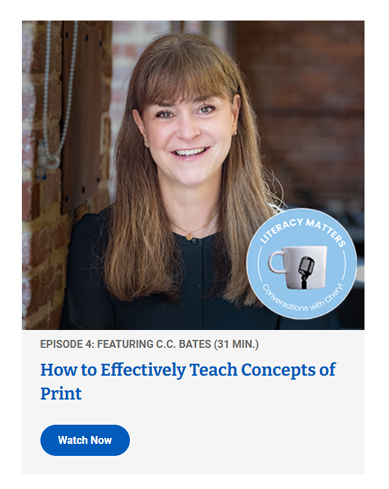All students deserve the chance to read and write with confidence. By teaching the concepts of print, you can instill that confidence and set your students up for long-term success.
Join us this week on Literacy Matters with Cheryl and she sits with C.C. Bates, Director of the Early Literacy Center of South Carolina, to navigate the most effective ways to teach the concepts of print and explore her book, Interactive Writing: Developing Readers Through Writing.
What are the concepts of print?
Lifelong literacy success begins with learning the foundations. Students need to first grasp the mechanics of print before being able to effectively decode the text before them.
Bates’ recommends implementing “interactive writing”, which is the practice in which students work together with the teacher to create, negotiate, and write a shared experience.
The Importance of White Space
Students start to correlate the way sounds operate and how they translate to paper. Understanding the role of the white space in between letters, words, and sounds then becomes the focus.
In the process, students experience a coordinated series of understandings that help them gain momentum as they expand their print-text connections.
Exposure, Exposure, Exposure
The most effective way to teach concepts of print is by simply exposing students to text. Consistent engagement with text shows students how print works allowing them to develop understandings independently.
“The more we interact intentionally around text, the more children develop understandings,” according to CC Bates.
The use of enlarged text, whether in big-book or digital formats, allows students to explore how discreet skills come together in an orchestrated way. Interactive writing works as an extension of this by directly allowing students to create the text and make the connections between oral and written language.
The Right Tools for the Job
One of the easiest ways to get students actively engaged in 1:1 correspondence is by curating an environment that welcomes fun in the classroom! To encourage re-reading, Bates recommends using fun pointers, light-based tools, and other materials that make students want to get their hands on them.
Learning Without Tears is committed to helping you become the literacy heroes your students need. By partnering with experts in the field, Literacy Matters is diving deep to explore the tips, tricks, and resources that make a world of difference in and out of the classroom.
To learn more about other actionable strategies that focus on the concepts of print, watch the full episode of Literacy Matters with C.C. Bates.
